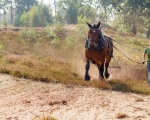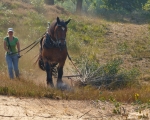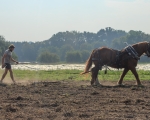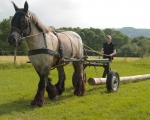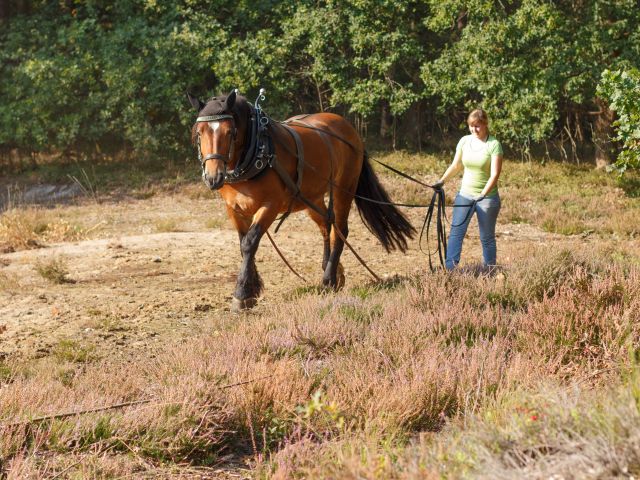Work and draft horses
Are you on the wrong track with workhorses? Who said so!
It's easy to get lost in the large forested areas of our region. In such a case, you might find yourself on a logging trail apparently going nowhere. Logging trails are unpaved paths used in forestry to transport logged wood and therefore often end in the middle of the forest. For a long time, forest workers used workhorses to move timber. From the 1960s at the latest, however, only modern agricultural machines have been used instead.
"Back to the Hooves" might represent the motto of landscape conservation in Fauna-Flora-Habitat areas today. For several years now, instead of modern machines, workhorses have been used again in the TERRA.vita Nature Park for various tasks. What does that mean exactly?
The horses can help, for example, with various seeding applications, to flatten down bracken fern or blackberries, to clear bogs, or to transport felled trees within a forest to a specific collection point along the forest path.
The traditional use of workhorses is now being revived in the interests of nature-friendly landscape management. The powerful horses require less space than the sometimes bulky machines and can also be used on uneven ground. They also lead to significantly less soil compaction, which leaves the soil healthier. In addition, they generally cause less damage to the tree population and, apart from a little methane, do not emit any exhaust gases. Due to these diverse ecological advantages, TERRA.vita is trying to expand the use of workhorses in the future. They are seen as a supplement to modern methods of landscape maintenance. Forest owners from the region who are interested in using workhorses can contact TERRA.vita, as can entrepreneurs or horse experts who are interested in such a cooperation.
Why is this an intangible cultural heritage?
With the targeted use of workhorses, not only are environmentally friendly measures taken in the sense of landscape conservation; in addition, a traditional process and an old craft is being revived. Until recently, the transporter of felled trees was even an independent profession, which has lost much of its importance due to the mechanization of forestry work. Today, the concern is about an environmentally conscious interaction between man and nature, in which the idea of sustainability is clearly in the foreground.
